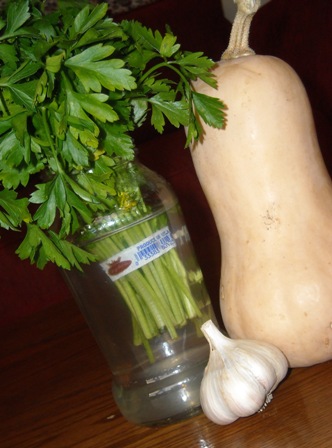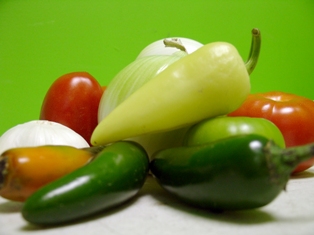
Ginger root is the underground rhizome of the ginger plant that was originally cultivated in Southeast Asia.
The gnarled and knobby root known as ginger is a fragrant and pungent addition to many Asian dishes. But what exactly is ginger and where does it come from? Ginger root is the underground rhizome of the ginger plant. Originally cultivated in Southeast Asia, this zesty herb provides a host of health benefits. It is known to alleviate gastrointestinal distress, aid in reducing the inflammatory effects of arthritis, and boost the immune system. Fresh ginger is easily found in most produce sections of your local supermarket. When selecting ginger, be sure to choose a root which is smooth, firm, and most importantly free of mold, which will often be green or white.
Preparation is simple and includes peeling the skin with a paring knife and mincing, chopping, or grating. Refrigerate the remaining ginger in a dry container. For an interesting variation on white rice, slice long, flat pieces of ginger and place in the water during preparation. The result will be a delicious infusion of ginger. This stir-fry not only features a gingery tasting chicken but also a bold ginger sauce. Not only will the taste have that wonderful gingery bite, but cooking it will fill your kitchen with an invigorating aroma.
Serves 4-5
1 ½ lbs. chicken breast, cut into ¼ in. thick slices
1 teaspoon cornstarch
3 tablespoons cold water
3 tablespoons vegetable oil
½ cup chicken broth
1 cup peas, either frozen or fresh
1 bell pepper, cut into thin strips
1 cup baby corn, either left whole or cut in half
1 cup bok choy (Chinese cabbage), thinly sliced*
¼ cup green onion, thinly sliced
¼ cup cilantro, finely chopped
For chicken marinade and stir-fry sauce:
4 tablespoons soy sauce**
2 teaspoons chili garlic sauce
2 tablespoons garlic, finely chopped
3 tablespoons sugar
3 tablespoons fresh ginger, grated
Slice chicken into ¼ in. thick slices. Mix cornstarch with water well and coat chicken in the cornstarch mixture.
Combine marinade/sauce ingredients in a medium bowl. Combine about half of the marinade with the chicken and refrigerate for at least an hour, allowing the chicken to marinate. Reserve the other half of the marinade in the refrigerator until you’re ready to prepare the stir-fry.
When you’re ready to prepare the stir fry, heat the vegetable oil over medium-high heat in a wok or large skillet. A wok ensures that all ingredients incorporate well and do not spill out from the sides of the pan while cooking. If using a skillet, it is suggested to use a deep one with steeper sides to ensure you don’t make a mess.
Once oil is heated, add the chicken and cook, stirring and turning the meat occasionally, until the chicken is just nearly cooked. Add reserved marinade and chicken broth to the meat and stir well.
Note about the next steps – when you add the vegetable to the stir fry makes a big difference in the final outcome of the dish. At this point, we begin adding our vegetables at intervals, all the while stirring often to incorporate all ingredients well and to allow them to cook evenly.
Add bell peppers and allow to cook for 1 minute. Add bok choy (Chinese cabbage) and green onion and allow to cook for another 1 minute. Add baby corn and peas and allow to cook for another 2-3 minutes or until the chicken is completely cooked through and vegetables are tender, but not soggy.
Sprinkle cilantro over stir-fry before serving. Enjoy over jasmine rice, Asian noodles, or by itself for a low-carb meal.

Note where the leafy tops end and the white stalks begin. This is where you cut the bok choy, using only the white bottoms. Photo taken by Yali Shi (http://asiastockimages.com)
*Bok choy, or what is sometimes referred to as Chinese cabbage, can be found in some supermarkets today. Otherwise, farmers markets, farm stands, Asian groceries, or health food stores often carry this vegetable. It’s easy to prepare. Simply wash well and cut off the leafy tops, leaving only the white bottoms. Cut into about ¼ in. slices. Baby bok choy, the younger version of the veggie, is also available and can be used as well.
**Try using light or lower sodium soy sauce. Although soy sauce is a staple in most Asian cooking, a mere tablespoon can have as much as 1000 mg of sodium. It is for this reason that even Asians use the sauce sparingly. Lighter or lower sodium soy sauces, which can be found next to traditional soy sauce at your super market, still has plenty of sodium, but at nearly half the amount.













